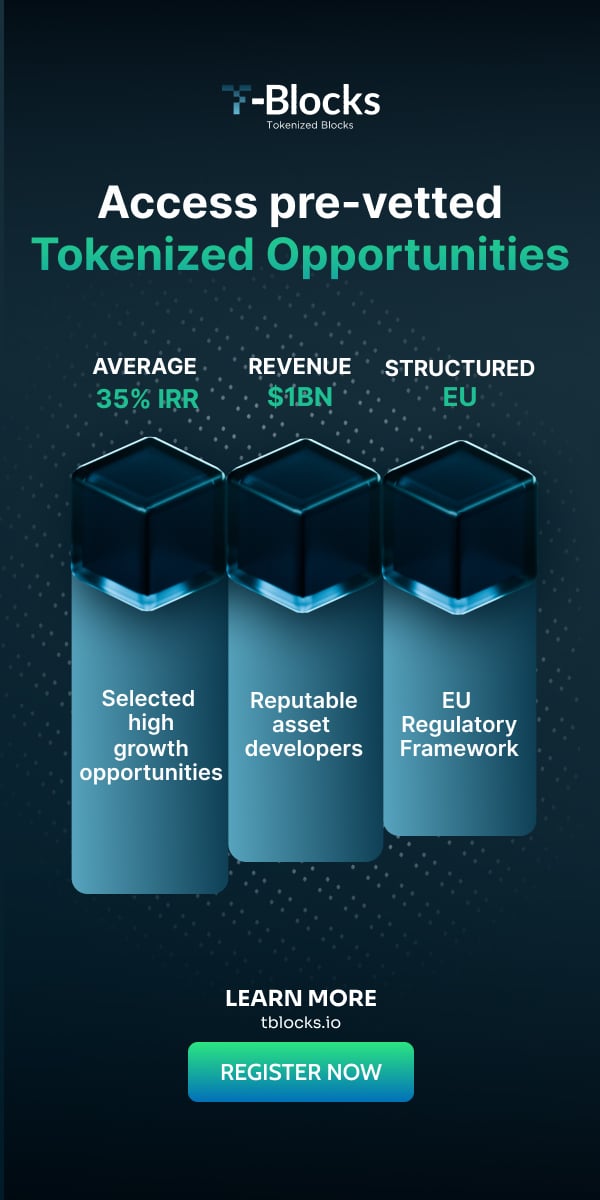Encoded Compliance: How this not so sexy aspect of tokenized securities will change the future of finance
By Ryan Bethem, COO, Chintai Ltd.
Blockchain technology will indelibly change the global financial system by ushering in increasingly autonomous methods for issuance, management, and trading of securities. Fractional ownership, 24/7 markets, and depth of liquidity in historically illiquid asset classes are often cited as the notable potentials of tokenized securities. But encoded compliance controls that automate regulatory aspects of securities exchange are often overlooked — while everyone at a dance party is focused on the music, the floor and gravity usually go mostly unnoticed.
To appreciate automated compliance and the impending evolution of our financial system, it’s important to understand some basics about existing securities law and notable processes that occur under the hood.
History — United States Securities Law
After the Great Depression hit the industrialised world in 1929, the SEC (Securities and Exchange Commission) was formed to regulate financial markets. The genesis of the SEC and modern securities law is based on two fundamental pieces of legislation. The Securities Act of 1933 and the Securities Exchange Act of 1934.
The Securities Act requires registration with the SEC to issue a security (or file for exception). The issuer is obligated to maintain compliance with the Securities Exchange Act to facilitate secondary trading. This includes filing annual, quarterly, and current financial reports with specific information regarding a given security and the participants involved in any exchange.

Trade Execution & Settlement
Selling and buying securities involves two distinct processes — execution and settlement. Execution is the process by which buyers and sellers are matched. When a price and amount of a given asset is matched, the agreement is recorded. Settlement occurs when the asset exchanges custody.
Execution of trades is easy and rapid. Exchanges like the NASDAQ can execute thousands of trades a second. But the settlement process can last two days or more after the trade is originally executed. The lag occurs because of resource-intensive reconciliation processes between broker-dealers, exchanges, and custodians.
When an asset changes custody, numerous aspects of the buyer or seller and the asset itself must be logged and reported to ensure legal transfer. Custody of an asset can only change hands after all of this information is validated, and relevant regulatory considerations are taken into account. Failing to provide proper reporting can result in serious penalties and consequences.
This may sound simple and straightforward. But each entity involved in a securities trade usually has their own database and distinct methods of indexing data. Without a shared source of information, each entity is forced to manually reconcile data with one another. The process is error-prone, costly, and slow.
Reporting Under the Hood
Maintaining financial reporting as an issuer is extremely cumbersome. Aspects of securities custody and trading that need to be traced and reported include accreditation status, quantity, holding duration, location, AML (anti-money laundering) checks, transaction monitoring and exposure limits. The information is stored “on paper” in PDFs, paper contracts, and various cloud-based spreadsheets. Unsurprisingly, because of the disparities in data management, the settlement process can be slow and expensive. Without a shared source of information between relevant entities, data is manually reconciled between custodians. The process has only become more demanding with the introduction of legislation such as MiFID II (markets in financial instruments directive).
Long term there is a very clear need and vision for a “shared golden source” of information. If all of the main parties involved in a trade indexed all aspects of securities issuance and trading in the same way, while using interoperable DLT (distributed ledger technology), manual reconciliation could be nearly eliminated. This would result in the ability to generate (automated) reports for regulators easier by several orders of magnitude.
“Geo-Fencing”
Whether issuing or trading securities, market participants must comply with the regulatory framework in the jurisdiction they reside. “Geo-Fencing” is a concept that entails encoding accounts and tokens with transfer limitations that reference underlying, on-chain share registries and identity information, in order to guarantee that the exchange of a given security is compliant with securities laws.
For example, assume the vision described in this article comes to fruition. Person A would simply sign up an account with Chintai. This would include KYC procedures and registering accreditation status which can be automatically cross checked by smart contract. Person B also has an account with Chintai except they have not registered their accreditation status. Both person A and person B are United States citizens.
Person B attempts to trade a security with Person A, but a smart contract recognizes that they have not registered their accreditation status. Since the security in question is encoded to only allow transfer to accounts that have achieved accreditation status, the smart contract would not allow the trade to execute, thereby automatically enforcing compliance.
Implications for Securities Trading & Regulated Decentralized Exchanges (DEX)
The aforementioned example is simple, but it’s easy to imagine how accreditation status is interchangeable with numerous checks that are required to take place before a securities trade could occur. Furthermore, this concept introduces the idea of a DEX for securities trading. Whereas the current process of accessing securities trading requires entering a “walled garden” that is provided by primary issuers and broker-dealers, the future could entail a far less restrictive environment to trade securities on a DEX that automatically confirms the validity of a trade based on securities law in real time.
Regulatory Oversight In Real Time
By porting legacy financial systems to DLT a unique opportunity arises whereby real time regulatory oversight, monitoring of transactions, and updating legal requirements for industry participants in real time is possible. By sharing a unified, trustless source of accurate, transparent data, regulators would no longer be “left in the dark”. Current methods of reporting are always behind real time due to the aforementioned friction points and inefficiencies in the global financial system. Consequently, regulators are always catching up to real time and do not have the resources to efficiently synthesize all of the data being received.
Updating Compliance Obligations In Real Time
Legal frameworks and regulatory requirements are constantly evolving. This requires industry participants to constantly adapt to new compliance obligations. In a future that fully leverages DLT, new rules could be issued on-chain. Depending on the nature of the regulatory requirement, new rules could either be updated and enforced immediately, or participants could make simple code changes that can be audited in real time with automated oversight.
Industry Trends & Vision
Chintai is an exchange and product suite for decentralized finance instruments. We service B2B white-labelled blockchain technology for institutional finance — fully on-chain, compliance enabled DLT for issuance, management, and secondary trading of tokenized securities.
Conversely, competitors are mostly focused on issuance and cap table management software and do not offer high-performance secondary trading capabilities. Since other solutions are built on protocols that cannot support low-fee, high performant, compliance enabled solutions fully on-chain, many aspects of issuance and management are handled off-chain. These sacrifices undercut the efficiency gains of a fully on-chain, transparent, compliance enabled solution.
We see an opportunity to build unique solutions that fully embrace the potential of blockchain technology with entirely on-chain compliance enabled products. By keeping all aspects of issuance, management, and secondary trading fully on-chain, Chintai preserves a vision that enables issuers, regulators, and other industry participants to maximize the efficiency gains of DLT.
Image by Gerd Altmann from Pixabay
More Articles:
REINNO Launches a Marketplace for Tokenized Commercial Real Estate.





















